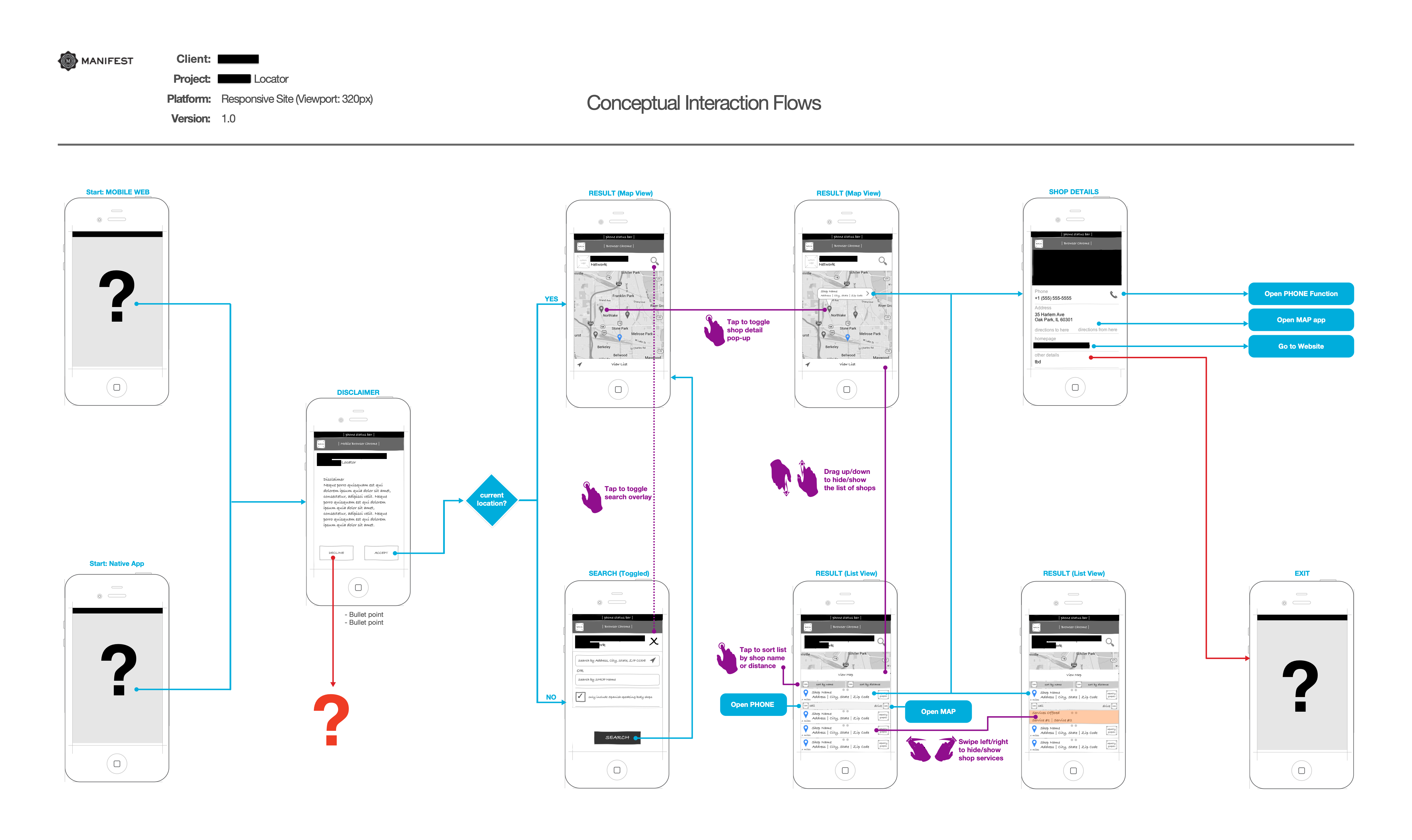RESEARCH + DESIGN
DENTIST FINDER
or how I learned to do product discovery and design on an agile project without access to end users
Client
Life Insurance
Duration
12 weeks
Role
UX lead
ABOUT THE PROJECT
My client – an supplemental life insurance provider – believed that its customers trusted their advice about which dentist to use; namely, the dentists my client uses for various claims. At the time, this “preferred dentist” list existed in bits and pieces all over the organization. My job was to design a searchable webpage and mobile experience that would make this list of recommended dentists to my clients customers for the first time.
OTHER CONSTRAINTS AND CONSIDERSATIONS
LITTLE TIME
I had less than two weeks to scope the project before development started
NO ACCESS TO USERS
Sponsor did not want us talking to users and validating concepts
FIRST AGILE PROJECT
The project itself was a pilot for agile design and development
MY ROLE
As the only UX architect on the scrum team, I was responsible for research, design, and documentation. I also helped the team write user stories and otherwise ensure everything is ready for development.
KEY ACTIVITIES
- RESEARCH 25%
- DESIGN 50%
- BUSINESS ANALYSIS 25%
MY APPROACH
Success on this project was predicated on both (1) getting my work done as quickly as possible and (2) winning the hearts and minds of a team that had never worked with a “designer” before and were worried I might be a blocker to getting their work done. For example, my suggestion for a handful of interviews with our target users was vetoed by the team the grounds that it was too time-consuming and that “we know what the users want.” Therefore, I had to figure out a way to dramatically reduce the scope of my research and design activities while still allowing user feedback to drive our decisions.
BY THE NUMBERS
Focus Group
Responsive Wireframes
Design Sprints
USER RESEARCH
FOCUS GROUP
Because I was unable speak to actual end users to understand their needs and context of use, I had to find an appropriate substitute. We recruited 10 employees we found in the cafeteria at lunch to a focus group later that day. In it, we discussed participants’ experience with dentists and tested the notion that customers would take a recommendation from my client on which dentist to choose.
DESIGN
RESPONSIVE WIREFRAMES
Responsive websites can sometimes triple the amount of design work required to document how the site looks and behaves. It is more than producing three versions of the same page for mobile, desktop, and some breakpoint in between. I needed to document how the parts of the page adapt as part of an overall responsive layout. I found that color-coded wireframes helped developers track how the layout will change having to know all the details, which meant they could start on development sooner.
DESIGN
WORKFLOW DIAGRAMMING
Supporting an agile development teams means producing just enough documentation to clarify requirements and provide a shared understanding of how the app will work. For instance, workflow diagrams helped developers see how a feature or components contributes to the overall experience of using the app.
DESIGN RECOMMENDATIONS
DESIGN RECOMMENDATIONS
THE DECIDING FACTORS
Based on what was said during the focus group, we learned that trust and convenience were the top two considerations – and loaded ones at that – in choosing a dentist. Therefore, the main job-to-be-done for the site was to help the visitor evaluate whether a dentist fit these criteria.
DESIGN RECOMMENDATIONS
WHO DO YOU TRUST?
When selecting a dentist, participants trust the recommendations of friends, family, and other customers who write reviews. They do NOT trust the advice of their life insurance provider, which some viewed as a conflict of interest at best and a back-channel way to raise their premiums at worst.
DESIGN RECOMMENDATIONS
CONVENIENCE IN CONTEXT
Convenience – as defined by participants – was a complex need to address. Hours of operation and location were the usual suspects. In addition, participants sought additional information about whether the dentist spoke their native language or performed a particular service – all of which needed to be represented and easy to find on the website.
